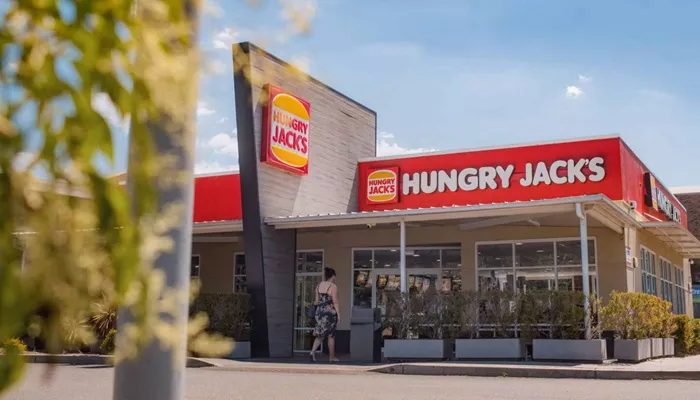Hungry Jack‘s is a prominent fast-food chain in Australia, known for its flame-grilled burgers, fries, and a variety of other menu items. Established in 1971, it has grown to become a household name, synonymous with quick service and delicious meals. However, many people are unaware of the intricate relationship between Hungry Jack’s and its American counterpart, Burger King. This article delves into the history, ownership structure, and operational dynamics of Hungry Jack’s, clarifying the misconception that it is owned by KFC.
The Origins of Hungry Jack’s
In the late 1960s, the fast-food landscape in Australia was relatively sparse. Enter Jack Cowin, a Canadian entrepreneur who saw an opportunity to introduce popular American fast-food concepts to the Australian market. Cowin had already made his mark by bringing Kentucky Fried Chicken (KFC) to Australia in 1969 and was eager to expand his business portfolio.
In 1971, Cowin sought to franchise Burger King in Australia. However, he quickly discovered that the name “Burger King” was already trademarked by another entity operating under that name in Adelaide. Faced with this hurdle, Cowin collaborated with Burger King’s corporate team to find an alternative name. They settled on “Hungry Jack’s,” a nod to a pancake mix brand owned by Pillsbury, which was Burger King’s parent company at the time. The first Hungry Jack’s restaurant opened its doors in Innaloo, Perth, on April 18, 1971.
SEE ALSO: Do Burger King Take Apple Pay?
The Legal Landscape
As Hungry Jack’s began to flourish across Australia, tensions arose between Cowin and Burger King Corporation. In 1991, a new franchise agreement was established that imposed stringent expansion requirements on Cowin’s operations. However, by the mid-1990s, Burger King sought to terminate this agreement, claiming that Cowin had not met the terms regarding store openings.
This led to a significant legal battle in which Cowin accused Burger King of attempting to undermine his business by opening competing stores under the Burger King name. In 2001, after years of litigation, the New South Wales Supreme Court ruled in favor of Cowin. The court found that Burger King had breached their contract and awarded Hungry Jack’s $46 million in damages. Following this ruling, Burger King decided to withdraw from the Australian market entirely.
Ownership Structure
Today, Hungry Jack’s operates as a wholly owned subsidiary of Competitive Foods Australia (CFA), which is also owned by Jack Cowin. This company manages all operations related to Hungry Jack’s in Australia and holds the master franchise rights for both Hungry Jack’s and Burger King within the country.
Despite being part of the global Burger King brand family, Hungry Jack’s maintains its unique identity within Australia. The operational model allows for local adaptation while adhering to certain standards set forth by Burger King Corporation. As such, Hungry Jack’s has become the second-largest franchisee of Burger King globally.
Menu Offerings And Brand Identity
Hungry Jack’s menu features a range of items that cater to Australian tastes while drawing on American fast-food traditions.
Signature offerings include:
Whoppers: The flagship burger known for its flame-grilled beef patty.
Bacon Deluxe: A burger featuring crispy bacon and cheese.
Chicken Burgers: Including options like spicy chicken and tendercrisp varieties.
Veggie Options: Catering to vegetarians with plant-based patties.
In addition to burgers, Hungry Jack’s offers breakfast items, sides like onion rings and fries, desserts such as sundaes and shakes, and beverages including soft drinks and coffee.
The brand has successfully positioned itself as an Australian favorite through local marketing strategies and community involvement initiatives. This approach has helped build customer loyalty while differentiating it from its global counterparts.
Challenges And Competition
Despite its success, Hungry Jack’s faces significant challenges in a competitive fast-food market dominated by giants like McDonald’s and KFC. The Australian fast-food landscape is characterized by evolving consumer preferences towards healthier options and sustainability practices. In response to these trends, Hungry Jack’s has begun introducing more nutritious menu items while also focusing on environmentally friendly packaging solutions.
Moreover, digital transformation has reshaped how fast-food chains operate. With increasing demand for online ordering and delivery services, Hungry Jack’s has invested in technology to enhance customer experience through mobile apps and partnerships with delivery platforms.
Conclusion
Hungry Jack’s stands as a testament to entrepreneurial spirit and resilience in the face of adversity. While it operates under the umbrella of Burger King Corporation as its master franchisee in Australia, it remains independently owned by Competitive Foods Australia led by Jack Cowin. This unique ownership structure allows Hungry Jack’s to thrive within the competitive fast-food market while maintaining its distinct identity.
Through strategic marketing initiatives and menu adaptations that resonate with local consumers, Hungry Jack’s has carved out a significant niche within Australia’s fast-food industry. As it continues to evolve alongside changing consumer preferences and market dynamics, Hungry Jack’s is well-positioned to remain a beloved choice for Australians seeking quick-service meals.
Related topics:
- How Many Gyu-Kaku Locations Are There in The Us?
- The 6 Best Burger King Meal in 2024
- How Does First Watch’s Training Program Support New Franchisees

